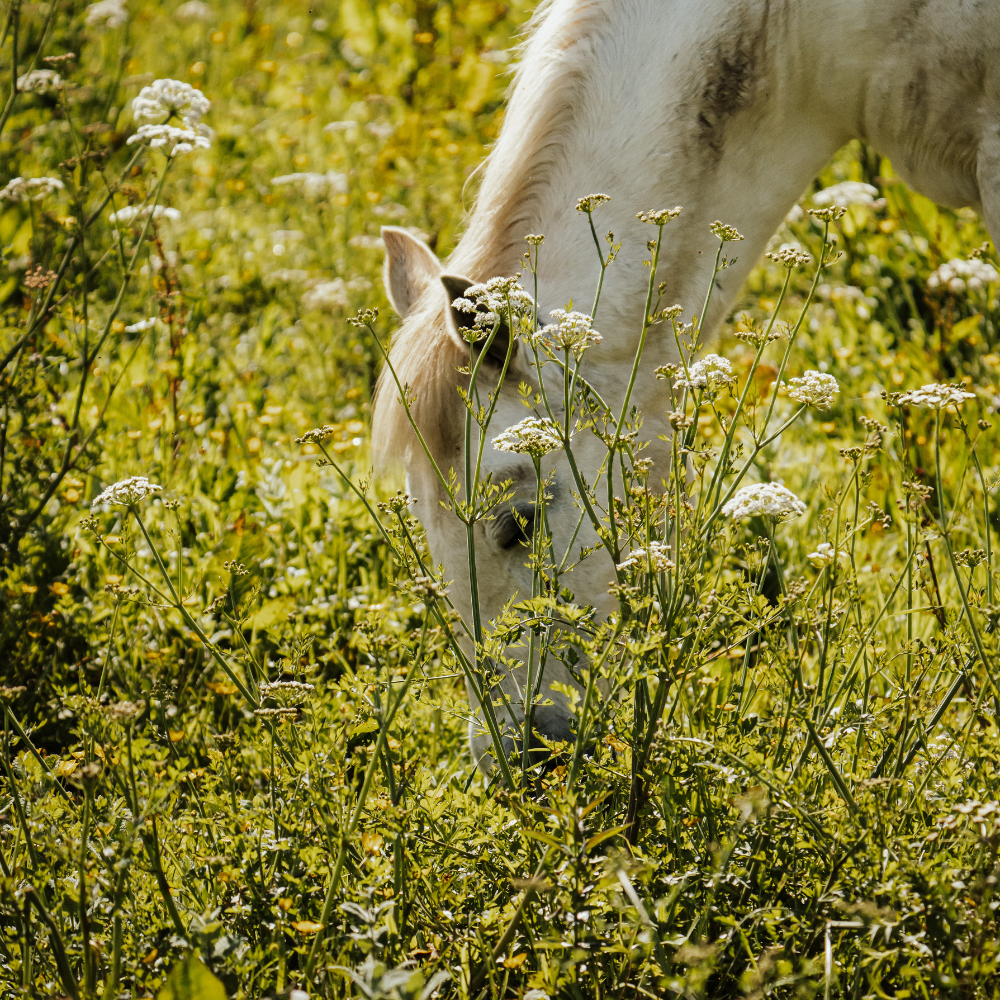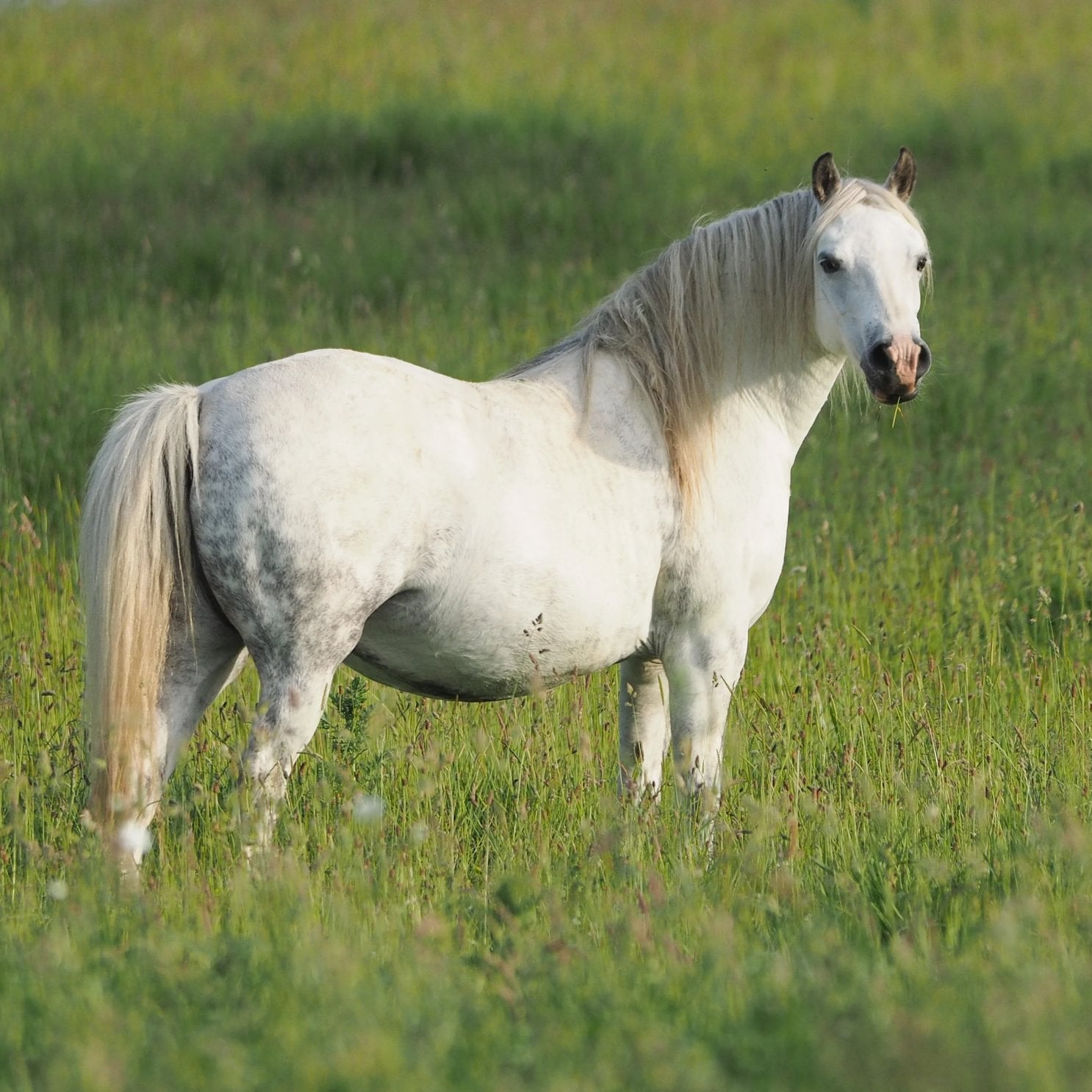From boswellia to garlic, marigold to turmeric - an introduction to these feed room staples and their traditional uses.
The traditional feeding of beneficial herbs has a long history, not only for people but for our animals too. One of the earliest known recordings of botanical veterinary treatments dates back around 2000 BCE to the Kahun Papyrus of ancient Egypt. This fascinating record, which covers all aspects of life, includes papers on medical treatments. Amongst those medical records is a standout papyrus on veterinary medicine, thought to be one of the earliest texts on treating animals.
When ancient meets modern
Ancient cultures often knew what worked, even if they didn’t know why. Cattle were, and still are, particularly important in Egypt. That ancient papyri detailed how to treat eye disease in a bull using melon juice. Whilst it might sound implausible, we now know melons are rich in Vitamin A, which benefits eyesight, and can even provide uniquely powerful antioxidants – only just being discovered by science.
Early equine herbal treatments can be seen in early Chinese herbal culture. Traditional Chinese Medicine has a history of over 4000 years, with the first recognised veterinary branch dating from the Zhou dynasty around 650 BCE, which was recorded as the ‘Canon of Veterinary Medicine’.
Most herbs have incredibly complex bioactive ingredients, and may be useful in a number of different ways and situations. Below is just a short overview of the best known uses of some of our commonly used herbal supplements.
Boswellia
Part used: Resinous gum, extracted from below the bark
Action: Best known as an anti-inflammatory, though a number of other actions are also noted, including as an analgesic and astringent. Veterinary uses include for joint conditions and inflammatory skin reactions.
Boswellia carteri is also known as frankincense – famously referenced in traditional Christmas stories and celebrations.

Chasteberry
Part used: Fruits
Action: Used for dysmenorrhea (period pains) in women, and a well-known anaphrodisiac to discourage carnal desires! Also useful for hormonal related imbalance, such as PPID in older horses and ponies.
The name of a herb often tells you its action? For example CHASTEberry, i.e. ‘pure and chaste’. Also known as ‘Monk’s Pepper’, as traditionally it was used for keeping monks studying their bibles.

Cleavers
Part used: All above-ground parts, including leaves, stems and seeds.
Action: Diuretic and to reduce fluid retention. Recognised for skin and coat condition, but most commonly used to support the lymphatic and urinary systems. Useful for stabled horses.
Many herbs have natural partners who they work particularly well with. The synergistic partner for cleavers is marigold.

Echinacea
Part used: Leaves, flowers and roots
Action: Immunostimulant. Echinacea is one of the best researched and most widely used of all herbal medicines. It is recognised across species for supporting a strong immune response. With a long history, echinacea is still very much researched for its role in modern medicine.
Not just for immunity, research in horses has shown echinacea can be useful for blood profiles too.

Garlic
Part used: Bulb
Action: Wide acting, including antibiotic, bactericidal and expectorant. Garlic is particularly well-known for respiratory related issues, and in horses is also fed simply for general health.
Like any feed ingredient, it is important to always follow the feeding instructions, and not exceed the recommended rate.

Marigold
Part used: Flowers and leaves
Action: Wide ranging, including diuretic, fluid retention, gastric tonic, anti-inflammatory, antiseptic and for skin health. Broad-ranging actions, means marigold is often used for general health and works particularly well paired with cleavers.
Marigold extracts are also used as a naturally sourced fly repellent and can be found in NAF OFF Extra Effect

Milk Thistle
Part used: Seeds
Action: Antioxidant and hepatoprotective (supports the liver). Milk thistle can be used widely as an antioxidant, but is best known for its role in liver support. The active ingredient, silymarin, has proven effectiveness against liver toxins.
Known since biblical times, it gets its name from the white veins on its leaves which have a milky appearance.

Psyllium
Part used: Husk, the seed coating
Action: Provides an excellent soluble dietary fibre for gut health. Highly absorbent, psyllium can form a gel in the intestine to gently remove sand and other debris from the gut.
Like many herbs, psyllium can be fed daily as maintenance, or for a short-term targeted course, dependent on need. Contact us for which approach suits your horse or pony.

Mint
Part used: Leaves
Action: Carminative (reducing flatulence), antiseptic and antispasmodic. Mint has a variety of uses including respiratory health and to reduce flatulence. However, its most common use in equine diets is simply as an appetite stimulant, as most horses love the taste.
There are over 30 different types of mint, though peppermint is most usually used for horses.

Turmeric
Part used: Rhizomes
Action: Antioxidant, anti-inflammatory and antiarthritic, are the best known actions. Curcumin, the key active of turmeric, is recognised in it’s role of supporting the anti-inflammatory pathways.
Turmeric’s action is enhanced by adding black pepper which helps maximise absorption of the curcumin.

How NAF used Herbs
Although these are some of the best-known examples, they represent just a small selection of the wide range of herbs and botanicals we use here at NAF. From our complex, research-backed formulations to the trusted favourites in our Simple Staples range, we use the right herbs at the right levels to support the wellbeing of every horse. Contact us if you’d like to learn more about which natural supplements might be the best choice for your horse.
Selected References
- Frey EF. The earliest medical texts. Clio Med. (1985-1986);20(1-4):79-90. PMID: 2463895.
- Hayashi, Ayne & Matera, Julia & Soares, Tatiana & Brandão de Campos Fonseca Pinto, Ana Carolina & Cortopassi, Silvia. (2007). Electro-acupuncture and Chinese herbs for treatment of cervical intervertebral disk disease in a dog. Journal of veterinary science. 8. 95-8. 10.4142/jvs.2007.8.1.95.
- Notin C, Vallon L, Desbordes F, Leleu C. Oral supplementation with superoxide dismutase in Standardbred trotters in training: a double-blind placebo-controlled study. Equine Vet J Suppl. 2010 Nov;(38):375-81. doi: 10.1111/j.2042-3306.2010.00266.x. PMID: 21059033.
- O'Neill W, McKee S, Clarke AF. Immunological and haematinic consequences of feeding a standardised Echinacea (Echinacea angustifolia) extract to healthy horses. Equine Vet J. 2002 May;34(3):222-7. doi: 10.2746/042516402776186001. PMID: 12108738.
Written by: Kate Hore, Head Nutritionist. RNutr (Animal), R.Anim.Technol (Cert), BSc(Hons). – Find out more about Kate and out Technical Team HERE.



